Charcot-Marie-Tooth disease (CMT) is a genetic condition that occurs in the peripheral nervous system, particularly in motor and sensory neurons, and is characterized by progressive muscle loss and reduced sensory perception. This neuropathy affects one in every 2,500 to 5,000 people worldwide, making it one of the most common neurological disorders of genetic origin.
CMT often causes changes in the structure and function of peripheral nerves. These changes can lead to muscle weakness and atrophy in the hands and feet, as well as loss of sensation and impairment of perceptions such as proprioception.
What are the Symptoms of CMT Disease?
Charcot-Marie-Tooth (CMT) usually begins to show symptoms in childhood or young adulthood. The characteristic signs of CMT are linked to the involvement of peripheral nerves, which can lead to a range of symptoms such as muscle weakness and loss of sensation. Here are the common symptoms of CMT:
- Weakness in the Ankles: Weakness in the ankles is one of the most common symptoms of CMT. This weakness can make it difficult to walk and maintain balance.
- Foot Deformities: CMT can lead to foot deformities such as high arches and hammertoes.
- Sensory Loss: Patients may experience decreased perception of sensations such as temperature, pain or touch, especially in the hands and feet.
- Muscle Atrophy: Muscles shrink and lose strength when they are not used, which can lead to atrophy of the arm and leg muscles in CMT patients.
- Low Foot Arches: Low arches in the soles of the feet are common in CMT patients and can cause foot and leg pain.
- Walking Difficulties: Muscle weakness and foot deformities can affect the way patients walk, causing instability and frequent falls.
CMT patients can vary greatly in the severity and progression of their symptoms. Therefore, early detection and individualized treatment plans are important to improve patients’ quality of life and slow the progression of the disease. If signs of CMT are recognized, it is recommended to consult a neurologist for a thorough evaluation and appropriate treatment.
How Can Families Recognize?
It can be recognized by complaints of muscle weakness, bone deformities and loss of sensation in the ankle of the foot. Also, people whose family members have similar symptoms are more likely to have the disease.
Types of CMT Disease
Charcot-Marie-Tooth (CMT) disease encompasses a number of subtypes caused by various genetic mutations. Each type of CMT is linked to specific genetic changes and differs in the severity of its symptoms, the nerves affected and the rate of progression. Here are the most common types of CMT and their characteristics:
- CMT Type 1: This is the most common type of CMT and is caused by defects in the myelin sheath. Myelin is a type of insulating material that covers nerve fibers and speeds up nerve conduction. In type 1 CMT, myelin is damaged, which slows nerve conduction and leads to muscle weakness and sensory loss.
- CMT Type 2: In Type 2 CMT, the problem is not in the myelin sheath but in the nerve cell itself. This type is caused by disorders in the axons (nerve fibers) of nerve cells and is usually not as severe as Type 1.
- CMT Type 3 (Dejerine-Sottas Disease): Usually occurs in early childhood and causes more severe neurological effects. This type is characterized by severe loss of myelin, causing severe slowing of nerve conduction.
- CMT Type 4: This type includes a group of rare forms of CMT caused by various genetic mutations. Type 4 usually starts in childhood and is caused by autosomal recessive mutations that cause defects in myelin or axons.
- CMTX: A dominantly inherited type of CMT linked to the X chromosome. It occurs in both men and women, but men usually have more severe symptoms.
Each type of CMT requires customized treatment and management strategies based on the genetic makeup that determines the course of the disease. Symptoms and severity often vary depending on the type of genetic mutation and how the individual genetic makeup is affected.
Charcot-Marie-Tooth (CMT) Disease Treatment
There is no definitive cure for Charcot-Marie-Tooth (CMT) disease. Current treatment approaches focus on relieving symptoms and improving the patient’s quality of life. These treatments usually include the following:
- Physiotherapy and Exercise Programs: Helps to maintain muscle strength and flexibility, improve joint mobility and prevent muscle atrophy.
- Use of Orthotics: Specialized devices (e.g. AFO – ankle foot orthoses) can be used to improve walking and posture by supporting weakened areas such as the ankle.
- Surgical Intervention: Surgical interventions may be considered especially for correction of deformities and pain control. Operations such as tendon transfers, bone corrections and joint fixations can be planned according to the degree of deformities and the needs of the patient.
- Pain Management: Medication and other pain control methods can be used to manage the pain experienced by patients.
- Supportive Therapies: Supportive devices and therapies may be recommended to facilitate activities of daily living and increase independent mobility.
A combination of therapeutic treatments, as well as orthopedic treatments and other interventions, is often considered the most effective approach to slow disease progression and improve quality of life. Each patient’s condition is assessed individually and the most appropriate treatment protocol is based on this assessment.
Things to Know About Charcot-Marie-Tooth Disease
Charcot-Marie-Tooth disease (CMT) is a progressive genetic disorder and its effects can vary greatly from person to person. Early diagnosis and effective management of the disease is critical to alleviate symptoms and improve quality of life.
- Genetic Counseling: Genetic counseling is important to understand the risk of passing CMT to others in the family. This is especially true for individuals who are considering having children.
- Lifestyle Changes: Lifestyle changes such as physical activity, proper footwear selection and ergonomic living space arrangements can help manage the effects of CMT.
- Regular Follow-up: Regular medical follow-up is important to monitor the progression of the disease and adjust treatment planning as needed.
Living with CMT can be challenging, but with appropriate treatment and support, many patients can lead active and fulfilling lives. A multidisciplinary approach to managing the disease can significantly improve the quality of life of the patient and their family. Therefore, the adoption of management strategies such as regular exercise, appropriate treatment and the use of assistive devices is encouraged.
Frequently Asked Questions About CMT Disease
What causes CMT disease?
CMT disease is usually caused by genetic mutations that affect peripheral nerves and impair the functionality of these nerves. These mutations prevent the nerves from signaling effectively to the muscles and prevent the muscles from functioning normally, leading to muscle weakness and atrophy.
Is CMT genetic?
Charcot-Marie-Tooth (CMT) is an inherited disease that can run in families. Genetic factors play an important role in the development of this condition, and the pathways of genetic transmission can vary depending on the type of disease. For example, some common types of CMT may have genetically dominant traits, while other types may have rarer recessive or X chromosome-linked inheritance traits. This means that the way each type is passed on to family members can differ. So, whether a child is born with CMT depends on the genetic makeup of the parents and the type of CMT they carry.

